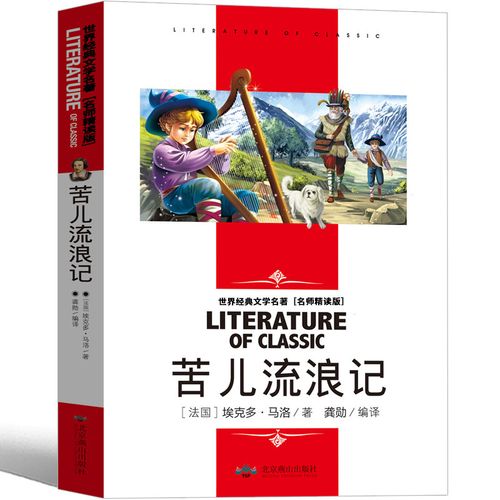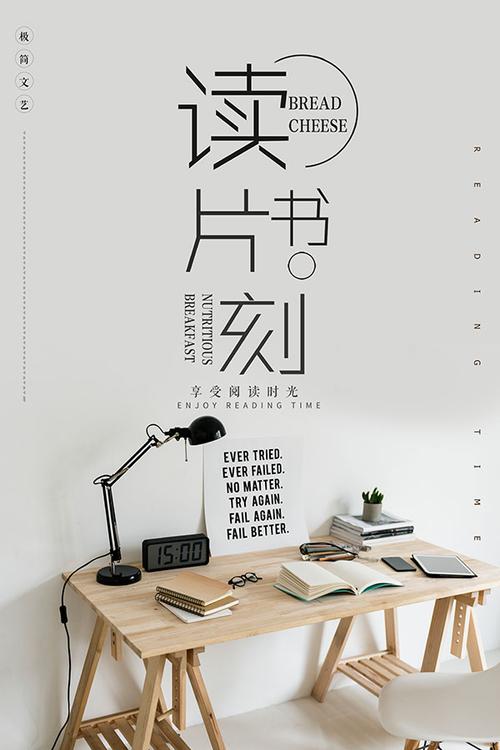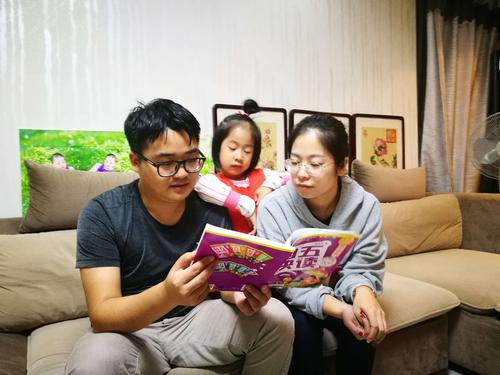CyrilofAlexandria是什么意思ilofAlexandria在线-上海行知中学
2023年4月19日发(作者:迪斯科舞厅)
中国传统文化的英语翻译
临门一脚,四六级翻译必备中国文化16句(一)
2014年6月2日 01:00
一、对龙图腾他的崇拜在中国大约已绵延了八千多年。中国龙是古人将鱼、蛇、
马、牛等动物与云雾、雷电等自然天象集合而成的一种神物。 中国龙的形成与
中华民族的多元融合过程同步。在中国人的心目中,龙具有振奋腾飞、开拓变化
的寓意和团结凝聚的精神。 Chinese Dragon Dragon totem worship in
China has been around for the last 8,000 years. The ancients in China
considered the dragon (or loong) a fetish that combines animals
including the fish, snake, horse and ox with cloud, thunder, lightning
and other natural celestial phenomena. The Chinese dragon was
formed in accordance with the multicultural fusion process of the
Chinese nation. To the Chinese, the dragon signifies innovation and
cohesion.
二、秧歌舞是中国汉族的一种民间传统舞蹈,通常在北方省份表演。秧歌舞者通
常穿上明亮多彩的表演服装,他们的表演动作有力迅速。在农历春节、元宵节等
节日期间,人们一旦听到锣鼓声,不管外面天气有多冷,他们都会蜂拥到街上看
秧歌舞表演。近年来,中国东北某些城市的老年人自发组织了了秧歌队,队员常
年通过跳秧歌舞来保持健康,同事他们也乐在其中。 Yangko is one of
tradition folk dance of Han in is usually performed in
四、Dumplings Dumplings are one of the Chinese people’s favorite
traditional dishes. According to an ancient Chinese legend,
dumplings were first made by the medical saint---Zhang Zhongjing.
There are three steps involved in making dumplings: 1) make
dumpling wrappers out of dumpling flour; 2) prepare the dumpling
stuffing; 3) make dumplings and boil them. With thin and elastic
dough skin, fresh and tender stuffing, delicious taste, and unique
shapes, dumplings are worth eating hundreds of times. There’s an
old saying that claims, “Nothing could be more delicious than
dumplings”. During the Spring Festival and other holidays, or when
treating relatives and friends, Chinese people like to follow the
auspicious custom of eating dumplings. To Chinese people who show
high reverence for family love, having dumplings at the moment the
old year is replaced by the new is an essential part of bidding farewell
to the old and ushering in the new year. 饺子是深受中国人民喜爱的传统
食品。 相传为古代医圣张仲景发明。饺子的制作是包括: 1) 擀皮、2) 备
馅、3) 包馅水煮三个步骤。其特点是皮薄馅嫩,味道鲜美,形状独特,百食
不厌。民间有“好吃不过饺子”的俗语。中国人接亲待客、逢年过节都有包饺子
吃的习俗,寓意吉利。对崇尚亲情的中国人来说,“更岁交子”吃饺子,更是欢
度除夕、辞旧迎新必不可少的内容。
五、Acupuncture is an important part of traditional Chinese medicine
(TCM). In accordance with the “main and collateral channels”
theory in TCM, the purpose of acupuncture is to dredge the channel
and regulate qi and blood, so as to keep the body’s yin and yang
balanced and achieve reconciliation between the internal organs. It
features in traditional Chinese medicine that “internal diseases are
to be treated with external therapy”. The main therapy of
acupuncture involves using needles to pierce certain acupoints of the
patient’s body, or adopting moxibustion to stimulate the patient’s
acupoints so as to stimulate the channels and relieve pain. With its
unique advantages, acupuncture has been handed down generation
after generation and has now spread all over the world. Nowadays,
acupuncture, along with Chinese food, kung fu (otherwise known as
Chinese martial arts), and traditional Chinese medicine, has been
internationally hailed as one of the “four new national treasures.”
针灸是中医学的重要组成部分。按照中医的经络理论,针灸疗法主要是通过疏通
经络、调和气血,来达到阴阳归于平衡,使脏腑趋于调和之目的。其特点是“内
病外治”。主要疗法是用针刺入病人身体的一定穴位,或用艾火的温热刺激烧灼
病人的穴位,以达到刺激经络。治疗病痛的目的。针灸以其独特的优势,流传至
今并传播到了世界,与中餐、功夫、中药一起被海外誉为中国的“新四大国粹”。
2014四六级考前翻译中国文化必备(二)
2014年6月2日 01:01
六、Chinese Kung Fu Chinese kung fu, or Chinese martial arts, carries
traditional Chinese culture in abundance. It is a traditional Chinese
sport which applies the art of attack and defence in combat and the
motions engaged with a series of skill and tricks. The core idea of
Chinese king fu is derived from the Confucian th丘壑的意思 eory of both “the
mean and harmony” and “cultivating qi” (otherwise known as
nourishing one’s spirit). Meanwhile, it also includes thoughts of
Taoism and Buddhism. Chinese kung fu has a long history, with
multi-various sects and many different boxing styles, and
emphasizes coupling hardness with softness and internal and
external training. It contains the ancient great thinkers’ pondering
of life and the universe. The skills in wielding the 18 kinds of weapons
named by the later generations mainly involve the skills of
bare-handed boxing, such as shadow boxing (Taijiquan), form and
will boxing (Xingyiquan), eight trigram palm (Baguazhang), and the
skills of kung fu w论语十则初中原文 eaponry, such as the skill of using swords, spears,
two-edged swords and halberds, axes, tomahawks, kooks, prongs
and so on. 中国功夫即中国武术,是将技击寓于搏斗和套路运动之中的中国传
统体育项目承载着丰富的中国民族传统文化。其核心思想是儒家的中和养气之
说,同时兼容了道家、释家的思想。中国武术源远流长、流派林立、拳种繁多,
讲究刚柔并济、内外兼修,蕴含着先哲们对生命和宇宙的参悟。后世所称十八般
武艺,主要指:徒手拳艺,如太极拳、形意拳、八卦掌等;器械功夫,如刀枪剑
戟、斧钺钩叉等。
七、Chinese characters were initially meant to be simple pictures used
to help people re初夏是几月 member things. After a long period of development,
it finally became a unique character system that embodies phonetic
sound, image, idea, and rhyme at the same time. The writing system,
which was extremely advanced in ancient times, began with
inscriptions on bones and tortoise shells, and these are regarded as
the original forms of Chinese characters. Afterwards, Chinese
characters went through numerous calligraphic styles: bronze
inscriptions, official script, regular script, cursive script, running
script, etc. Chinese characters are usually round outside and square
inside, which is rooted in ancient Chinese beliefs of an orbicular sky
and a rectangular Earth. The five basic strokes of Chinese characters
are “---“ (the horizontal stroke) “│” (the vertical stroke),
“/”( the left-falling stroke), “\” (the right-falling stroke), and
“乙” (the turning stroke).
汉字是从原始人用以记事的简单图画,经过不断演变发展最终成为一种兼具音、
形、意韵的独特文字。现存中国古代最早成熟的文字是甲骨文,被认为是现代汉
字的初形。此后,汉字又经历了金文、隶书、楷书、草书、行书等不同的阶段。
汉字结构“外圆内方“, 源于古人”天圆地方“的观念。汉字有五种基本笔画,
即:横、竖、撇、捺、折。
八、Chinese Chopsticks The Chinese way of eating with chopsticks is
unique in the world. The recorded history of chopsticks started more
than three thousand years ago. Chopsticks were named zhu in
ancient Chinese. They look deceptively simple to use, but possess
multi-various functions, such as clamping, turning over, lifting up,
raking, stirring, scooping, poking, tearing, and so on. Chopsticks
were taken as an auspicious mascot by ordinary people in ancient
China. For example, the partial tone of chopsticks is often used by
people as a metaphor at weddings to indicate a blessing or
benediction for the couple to have a baby soon. Unlike using a knife
and fork or one’s own hands, a pair of chopsticks also implies the
meaning of “Harmony is what matters”. Chopsticks are highly
praised by Westerners as a hallmark of ancient oriental civilization.
中国人使用筷子就餐的方式在世界上独树一帜。有史记载用筷的历史已有三千多
年。筷子古时称为箸,它看似简单,但却同时具有夹、拨、挑、扒、拌、撮、戳、
撕等多种功能。中国民间视筷子为吉祥之物,如婚俗中将筷子隐喻为快生贵子的
祝福等。与使用刀叉以及手抓的 方式不同,成双结对的筷子含有“和为贵“的
意蕴。西方人赞誉筷子是古老的东方文明。
九、Chinese Seal A seal can also be defined as a stamp. Both the
Chinese official and private seal of various dynasties have different
titles, such as stamp, zhu note, contract, fu, lease and others. The
seals used by the emperors of ancient China were called xi, yin, bao,
etc. According to historical records, seals were widely used during
the Warring States Period (475BC-221BC). The making of a seal is to
engrave fonts, such as seal characters and official script and so on; or
images in the form of intaglio and embossment into the seal,
basically shaped as round or square. Covered with a vermilion overlay,
the Chinese seal is not only used in daily life, but it is also used to
represent signatures on paintings and calligraphies. It is gradually
becoming one of China’s unique artworks.
印章就是图章。中国历代官、私所用的印章有印信、朱记、合同、符、契等等不
同的称谓,而帝王所用的印章古时称玺、印、宝、章等。据史料记载,印章在战
国时代已普遍使用。印章的制作六宫粉黛无颜色的上一句是什么 是将篆隶等字体、图像用阴、阳的形式雕刻而成,
形状以圆、方为主。印章用朱色 钤盖,除日常应用外,又多用于书画题识,逐
渐成为中国特有的艺术形式之一。
十、Chinese Era The Chinese era is the symbol that the Chinese
calendar uses for recording and naming years. The ten Heavenly
Stems are: jia, yi, bing, ding, wu, ji, geng, xin, ren, gui. The twelve
Earthly Branches are: , yin, mou, chen, si, wu, wei, shen, you,
xu, hai. After observing the lunar month, the ancients found that the
moon always wazes and wanes roughly 12 times a year, and two lunar
months account for about 60 days, so the order of the ten Heavenly
Stems and the order of the twelve Earthly Branches are properly
matched in turn. In terms of recording date, 60 years is considered to
be a full time cycle. The Chinese era chronology was first invented in
ancient times and is still in use now. according to the chronology of
the “ten Heavenly Stems,” 2011 is the year of “the seventh of the
ten Heavenly Stems” and “ the fifth of the twelve Earthly
Branches”.
天干地支是中国历法中用以记录和命名年岁的方法。十天干为:甲、乙、丙、丁、
戊、已、庚、辛、壬、癸;十二地支为:子、丑、寅、卯、辰、巳、午、未、申、
酉、戊、亥。古人观测朔望月,发现月亮圆缺12次大体上《芳华》朗诵稿 是一年的天数,而两
个朔望月约是60天。古人以十天干与十二地支的顺序依次相配,记录不同年份,
60年为一个轮回。干支纪年法从古沿用至今。按干支纪年法,2011年便是辛卯
年。
十一、Chinese Beijing Opera Praised as “Oriental Opera”, Beijing
Opera is a genuine national quintessence of China. It originated from
many kinds of ancient local operas, especially huiban in southern
China. At the end of the 19th Century, Beijing Opera evolved and
took shape, becoming the greatest kind of opera in China. Beijing
Opera is a blend of performing arts---song, speech, performance,
acrobatix fighting and dance. Beijing Opera portrays and narrates
the plot and characters through stylized acting. The main types of
roles in Beijing Opera are sheng(male), dan (young female), jing
(painted face, male), and chou( clown, male or female). 京剧被誉为
“东方歌剧”, 是地道的中国国粹。它起源于中国多种古老的地方戏剧,特别
是南方的“徽班”。到了19世纪末,京剧形成并成为中国最大的戏曲剧种。京
剧是综合性表演艺术,集唱(歌唱)、念(念白)、做(表演)、打(武)、舞(舞
蹈)为一体,通过程式化的表演手段,叙述故事,刻画人物。角色主要分生(男
性)、旦(女性)、净(男性)、丑(男性女性皆有)四大行当。
十二、Chinese Taoism Taoism first originated in China. The founder of
Taoism is Laozi, a philosophe黯然销魂者 r and thinker who lived in the late Spring
and Autumn Period (770BC-476BC). Tao Te Ching whose authorship
has been attributed to Laozi, is considered to be the main Taoist
classic. Taoism advocates the value of a human being’s life,
recommends the discarding of all desires and worries from one’s
mind, and encourages the cultivation of moral character and the
nourishment of human nature. The following is an example of
Laozi’s golden saying: The way that can be told of is not an
unvarying way; The names that can be named are not unvarying
names. It was from the nameless that Heaven and Earth sprang; The
named is but the mother that rears the ten thousand creatures, each
after its kind. Truly, only he that rids himself forever of desire can see
the secret essences; He that has never rid himself of desire can see
only the outcomes. 道教是中国土生土长长的宗教。创始人是春秋末期的哲
学家、思想家老子。道教以老子所著的《道德经》为主要经典。道教主张“重人
贵生”。崇尚清静无为,修身养性。“道可道,非常道。名可名,非常名。无名
天地之始;有名万物之母。故常无,欲以观其妙;常有,欲以观其徼”便是老子
的至理名言。 十三、Chinese Idioms Chinese idioms refer to
comprehensive and integrated fixed phrases and expressions. Idioms
are established and accepted by constant usage and common
practice. An idiom is a language unit that is larger than a word, but
has the same grammatical function as a word. Most Chinese idioms
consist of four characters. For example, ziqiangbuxi ( make
unremitting efforts to improve oneself), qingchuyulan(bluer than
indigo), and houjibofa (success comes with time and effort). Idioms
are extrated from folk proverbs, ancient works of literature, poems,
fables, allusions, and well-known sayings. Idioms are a part of the
Chinese language that are concise and have great vitality. 中国成语是
汉语中意义完整的表示一般概念的固定词组或短语。“成语”中的“成既是约定
俗成。成语是比词大而语法功能又相当于词的语言单位。绝大多数的中国成语由
四个汉字组成,例如:自强不息、青出于蓝、厚积薄发。成语主要从民间谚语、
古代文学作品、诗歌、寓言、典故、名言警句等方面提炼而成,是汉语语言中精
炼而又富有生命力的一部分。 十四、China is the home of silk. Mulberry
planting, sericulture, silk reeling and thickening are all great
inventions of the ancient Chinese. As early as the Shang and Zhou
Dynasties (1600BC-256BC), the Chinese people’s silk-weaving
techniques had reached an extremely high level. During the Western
Han Dynasty (206BC-25AD), Zhang Qian, an outstanding diplomat,
travelled around central Asia and connected China with the Persian
Gulf and the Mediterranean, opening up a new era of Sino-foreign
trade, exchange and communication. From then on, China’s silk
became well known for its extraordinary quality, exquisite design
and color, and abundant culture connotations. Hitherto, Chinese silk
has been accepted as a symbol of Chinese culture and the emissary of
oriental civilization. 中国是丝绸的故乡。栽桑、养蚕、缫丝、织绸是中国古
代人民的伟大发明。商周时期丝绸的生产技术就已发展到相当高的水平。西汉时
张骞通西域,把中原与波斯湾、地中海紧密联系起来,开辟了中外交流贸易的新
纪元。从此中国的丝绸以其卓越的品质、精美的花色和丰富的文化内涵闻名于世,
成为中国文化的象征。东方文明的使者。
十五、Chinese Classical Garden The Chinese classical garden is a
precious treasure of our ancient Chinese architecture. It is a kind of
environment art, which systematically combines artificial mountains
and rivers, plants and buildings with the natural landscape. The
construction standard of a Chinese classical garden is “artificial as it
is, the garden must look ingenious and natural.” When you go
sightseeing in a Chinese classical garden, you should be able to
appreciate its artistic concept which “makes use of the natural
landscape to create the real fun of mountains and rivers for
viewers.” Of the world’s three major garden systems, the Chinese
classical garden is hailed as one of the origins of the world’s garden
due to its long history and abundant connotations. 中国园林是把人造
的山水、植物、建筑等与自然地貌有机结合的环境艺术,是我国古代建筑艺术的
珍宝。其建造原则是“妙极自然,宛自天开”雨天禅意的经典句子 。游赏中国古典园林,能充分领略
“假自然之景,创山水真趣”的园林意境。在世界三大园林体系中,中国园林历
史悠久、内涵丰富,被誉为世界造园史上的渊源之一。
十六、The Four Treasures of the Study The writing brush, ink stick, ink
stone, and paper were requisite treasures in the study of the scholars
of ancient China, and they are often referred to as the “Four
Treasures of the Study.” The writing brush and ink stick have been
used by the Chinese to write and paint since 5,000 years ago. In the
Qin Dynasty (221BC---206BC), people already used feathers of
different hardness and bamboo trunks to make brushes. During the
Han Dynasty (206BC-220AD), man-made ink was used instead of
natural ink. After paper was invented by the Chinese, bamboo slips,
wooden tablets, brocade and silk, which originally functioned as
writing surfaces, gradually faded out. The ink stone was first
developed with the use of writing brushes and ink. After the Song
Dynasty (960AD---1279AD), the “Four Treasure of the S其中的拼音 tudy”
particularly referred to hubi, the writing brush produced in Huzhou,
Zhejiang province; huimo, the ink stick produced in Huizhou, Anhui
province; xuan paper, a kind繁花嫩叶的拼音 of paper produced in Xuanzhou, Anhui
province; and duanyan, the ink stone made in Zhaoqing, Guangdong
province (Zhaoqing was earlier called 小学文言文大全短篇30 Duanzhou). Indeed, the Four
Treasures of the Study” have writtin the whole Chinese civilization,
as it is. 笔墨纸砚是中国古代文人书房当中必备的宝贝,被称为“文房四宝”。
用笔墨书写绘画在中国可追溯到五千年前。秦时已用不同硬度的毛和竹管制笔;
汉代以人工制墨替代了天然墨;有了纸张以后,简牍锦帛逐失其用;砚台则随笔
墨的使用而发展。 “文房四宝”到宋朝以后特指湖笔、徽墨、宣纸、端砚。可
以说文房四宝书写了整个中华文明。
bns是什么意思在线翻译读音例句-windows8广告歌曲
更多推荐
传统文化的英文化翻译化英语怎么说








发布评论